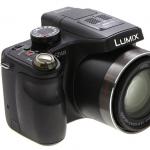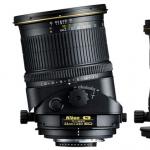Cellular mobile communication system CDMA. Fundamentals of CDMA technology "The Last of the Mohicans"
The regulator extended the life of the CDMA-800 standard in Russia for several more years. Changes to the Table of Frequency Allocations, adopted at the last meeting of the State Commission on Radio Frequencies, allow CDMA operators to renew their licenses, which expire on December 31, 2010. True, for this, CDMA-800 operators, who in total serve about 400 thousand Russian subscribers, will have to receive new, private decisions of the SCRF. However, many players do not see the point in this: without an additional band for data transfer, they are still doomed to die.
Back in 2000, the SCRF ordered operators to release the 800 MHz band for the needs of digital television until 2010. At that time, cellular operators of two standards worked in the 800 MHz frequency band: AMPS / D-AMPS and CDMA (IS-95). The first in 2001 agreed with the regulator to issue them the right to work in the GSM-1800 standard instead of the previous frequencies. Similar proposals were received by CDMA-800 operators, but they were in no hurry to switch to another standard. Moreover, CDMA-800 operators applied to the regulator with a request to extend the validity of their licenses until 2011, but were invariably refused.
On August 18 of this year, one of these operators - CJSC MetroTelKazan - filed a lawsuit with the Supreme Arbitration Court (SAC), in which the Government of the Russian Federation was listed as the defendant, and the Ministry of Telecom and Mass Communications of Russia was the third party. MetroTelKazan demanded to invalidate Note 168 of the Table of allocation of frequency bands between radio services of the Russian Federation, approved by a government decree of July 15, 2006 (frequency bands 824-834; 869-879 MHz). However, a week later, on August 24, 2010, the Supreme Arbitration Court returned the claim to the applicant on the grounds that the Supreme Arbitration Court had no jurisdiction over the decision of the Government of the Russian Federation. The corresponding ruling on the return of the claim of MetroTelKazan CJSC is published on the SAC website. The plaintiff received a recommendation to apply to the Supreme Court.
However, the need to apply to the Supreme Court has disappeared: at a meeting on August 23, the State Committee for Radio Frequencies unexpectedly opened up the possibility of extending CDMA-800 licenses for several more years. Representatives of several CDMA-800 operators told ComNews about this.
A ComNews source who was present at the SCRF meeting reports that the commission did not make a specific decision about CDMA-800 operators, however, it made several changes in the closed mode to the Frequency Band Allocation Table between RF radio services that affect the work of such operators. In other words, the operators have a theoretical opportunity to renew their licenses, however, for this, each of them will have to receive a new, private decision of the State Committee for Radio Frequencies. "The SCRF may also refuse to allocate frequencies to them - for example, in case of a negative conclusion of the examination for electromagnetic compatibility with existing or planned RES, because the regulator plans to give the 800 MHz band for LTE," the source argues. The regulator is more likely to meet those players whose CDMA-800 licenses expire not in 2010, but in 2011 or 2012. then their licenses will not be renewed."
According to the President of the Association of CDMA Operators Valentin Kosykh, the owners of CDMA-800 networks together serve about 400,000 Russian subscribers. The largest of them is the Voronezh "Kodotel" (about 80 thousand subscribers). Svyazinvest companies continue to work in this standard: YuTK in Rostov-on-Don and eight cities of the Rostov region, Uralsvyazinform in Chelyabinsk and Tyumen, VolgaTelecom in Saratov and Nizhny Novgorod. RTOs are transferring these subscribers to the new standard. "We are taking a set of measures to close work in the CDMA-800 standard. Subscribers will be offered to switch to a fixed network and to the GSM standard on preferential terms," Uralsvyazinform's press secretary Valery Kostarev told a ComNews reporter.
ASVT operator (in the Tambov Region and Stavropol Territory) has CDMA-800 networks, as well as the holding company Metrosvyaz Ltd. operator of this standard - "OrskInterSvyaz" in the Orenburg region and "MetroTelKazan".
The Tatarstan operator of CDMA-800 - CJSC "MetroTelKazan" - from August 1, 2010 ceased operations without waiting for the expiration of the license. This step was dictated by two circumstances. Firstly, the company was afraid of possible lawsuits from subscribers, so it preferred to announce the termination of operations ahead of time (5 months before December 31, 2010 - the expiration date of the license). Secondly, due to the uncertain status of CDMA-800 networks in Russia, their subscribers have been running away over the past year and a half. Alex Molozanov, who controls 80.1% of the holding Metrosvyaz Ltd. (it also includes MetroTelKazan), he explained to a ComNews reporter: "At first, everyone believed that mobile operators should release the 800 MHz band by the end of 2009, but we hired lawyers and proved that the decision of the State Committee for Radio Frequencies" to release before 2010. "means until December 31, 2010. But all these events had a negative impact on the subscriber base of CDMA-800 operators."
As a result, by August 2010, MetroTelKazan had about 10 thousand subscribers left, and the vast majority of them were low-income. "It didn't make economic sense to leave these subscribers," Molozanov says. Therefore, the company decided to stop operations from August 1, having agreed with the local "Beeline" on the transfer of both subscribers and numbering. Andrey Yudov, director of the Kazan branch of OJSC VimpelCom, Andrey Yudov, said: Beeline was the only operator to offer MetroTel subscribers to keep their numbers and not lose contacts with relatives, friends and partners. "The history of MetroTel itself shows that this format was not promising. Since 1998, there has been an outflow of subscribers: the active subscriber base of MetroTel has decreased by 30%. This is due to the following reasons. First, the CDMA standard does not allow subscribers to enjoy the benefits of high-speed packet data transmission, Internet access. Secondly, CDMA did not allow the operator to provide subscribers with a wider range of communication services," Andrey Yudov told a ComNews reporter.
However, Metrosvyaz believes that extending licenses is not enough. Alex Molozanov emphasizes that currently the killer application on the cellular market is mobile data transmission, however, with the amount of frequencies available to CDMA-800 operators, it is unrealistic to deploy this service. "All CDMA-800 operators have only one carrier, with a spectrum width of ¼ megahertz. There is a special technology for data transmission in CDMA networks - EV-DO - but at least one more carrier is needed to run it."
According to Alex Molozanov, even if MetroTelKazan (and other companies of the Metrosvyaz holding) can obtain private solutions from the State Committee for Radio Frequencies and renew licenses from Roskomnadzor, it makes no sense for them to work only as providers of mobile voice communications. "Without data transmission, we are not competitive," he sums up.
According to ComNews, having received the decision of the SCRF in writing, CDMA-800 operators intend to apply to the Federal Antimonopoly Service (FAS) with a complaint about the restriction of competition. “All GSM and CDMA-450 operators have enough frequencies to provide both voice and data services,” says the head of one of the CDMA operators. “And CDMA-800 operators are limited in frequency resources, which creates unequal conditions for them to compete ".
Meanwhile, the number of contenders for frequencies in the 800 MHz band is growing day by day in Russia: this band is better than others for building LTE networks over large areas. "As we previously stated, taking into account the geographical and demographic characteristics of Russia, the 700-800 MHz band seems to be optimal for covering areas with low population density, including small towns and rural areas, which are still covered to a small extent by both fixed and high-speed communications. access to the Internet,” says VimpelCom spokeswoman Anna Aibasheva. VimpelCom itself also has a CDMA-800 network in Krasnoyarsk: it inherited it from Golden Telecom, which in 2003 absorbed the Krasnoyarsk operator SibChallenge-Telecom. "We have about 7,000 CDMA-800 network users in Krasnoyarsk, and we plan to transfer them to the GSM standard by the end of the year," Aibasheva concluded.
ANNA AFANASIEVA, LEONID KONIK
19.08.2010
The CDMA-800 standard in Russia has four months left to live: on December 31, 2010, the licenses for the provision of communication services in the 800 MHz band expire. CDMA-800 operators have applied to the regulator many times with a request to renew their licenses, but they have invariably been refused.
While the Big Three, Skartel and Svyazinvest are pushing for the development of 4G technology, several hundred thousand Russians still communicate via CDMA-800 technology, which was declared obsolete ten years ago. In 2000, the State Commission on Radio Frequencies (SCRF) ordered operators to release the 800 MHz band for the needs of digital television until December 31, 2010. In return, by decision of the SCRF, they were asked to switch to the 1800 MHz band. At that time, cellular operators of two standards worked in the 800 MHz frequency band: AMPS / D-AMPS and CDMA (IS-95). The first in 2001 agreed with the industry regulator to issue them the rights to work in the GSM-1800 standard instead of the previous licenses and frequencies. Similar proposals were made to CDMA-800 operators. (cm. news on ComNews, December 18, 2007).
As market participants told a ComNews reporter, CDMA-800 operators applied to the regulator with a request to extend their licenses until 2011, but were refused. "According to the decree of the Government of the Russian Federation, the radio frequency bands 824 - 834 MHz and 869 - 879 MHz can be used on a secondary basis for cellular systems of mobile and fixed radio communications until the end of their depreciation period, but no later than 2010," the press secretary explained to a ComNews reporter Roskomnadzor Mikhail Vorobyov.
Roskomnadzor has repeatedly extended licenses for CDMA-800, however, in the license terms, it indicated that the operator is obliged to stop using the radio frequency bands 824-834 MHz and 869-879 MHz until December 31, 2010. "This is due to the fact that licenses were not issued for cellular communication, but to local telephone with wireless access. Thus, as an alternative, operators can deploy networks using DECT technology," the representative of Roskomnadzor added.
“Indeed, the SCRF provided for the use of licenses issued not for cellular communications, but for local communications with wireless access,” testifies Anton Bogatov, an independent expert in the field of telecommunications law. “However, in order to provide communications using DECT technology, operators will have to not only change all equipment, but also to reissue licenses. Technically, this is possible, but expensive, time-consuming and economically unjustified." According to him, many attempts were made in Russia to implement the DECT project as a main service, but none of them were successful.
The future of CDMA-800 operators looks sad. Several operators were forced to leave the market. For example, a few weeks ago it became known that the Kazan CDMA-800 network, owned by the Metrosvyaz company, had stopped working. However, there are also such operators who managed to solve the problem: the Voronezh operator Kodotel, operating in the CDMA-800 band, won a GSM license in 2007, participating in the competition on a general basis.
At the moment, the subscriber base of CDMA-800 operators hardly has several hundred thousand subscribers. "The fact that we may lose licenses in the near future, of course, does not contribute to the influx of new subscribers," lamented CEO ASVT company (provides communication services in several regions of Russia) Irina Fedulova. - We still hope that the licenses can be extended, negotiations are underway. If not, we'll try to switch to another range."
The state holding Svyazinvest also has several regional CDMA-800 networks. According to Nadezhda German, Director of the Wireless Communications Department at Svyazinvest, subscribers of these networks have been offered to switch to operators operating in a different band. "800 MHz is a very good range. In the future, it can be used not only for the development of television broadcasting, but also for the construction of fourth-generation networks," she believes.
"Of course, the development of television broadcasting at a frequency of 800 MHz is contrary to world practice," said Yury Dombrovsky, president of the Association of Regional Telecom Operators (AROS). that translation programs have been running for several years."
Market participants surveyed by ComNews believe that the 800 MHz frequency range is the most effective for the development of wireless communications. "World practice speaks of this. But in most cases, operators used old equipment, which did not allow them to fully reveal its advantages," says one of the experts. Nevertheless, the position of the regulator in this situation is unequivocal and gives reason to believe that by the end of 2010 operators will stop working in the CDMA-800 standard.
Comments:
- http://pics.livejournal.com/c0mandir/pic/0002k69g/
- I would like to know where the author got the information that "At the moment, the subscriber base of CDMA-800 operators hardly has several hundred subscribers." Due to what the remaining CDMA-800 operators live. One could at least take an interest in Roskomnadzor. Operators submit quarterly reports there. Very incompetent article.
- Kodotel had about a hundred thousand subscribers a year ago, I don’t think that all of them switched to GSM in a year, Saratov also had enough subscribers, USI also had enough, so “several hundred subscribers” is EXTREMELY unreliable information.
- This is the author's mistake. I told her that there are several hundred THOUSANDS in SDMA and several tens of THOUSANDS in amps
- Heh! There are no jobs in another standard? Do subscribers of other standards use the connection with displeasure? Well, they don't pay taxes, of course.
- The big three are now going to pounce like wolves and "finish off" CDMA chic. 800 MHz is very tempting for LTE. It would be VERY fair to give our surviving operators the opportunity to go there for their many years of harassment by Reiman and the team. Moreover, the technologies seem to be closer to each other than GSM and LTE.
- to which the same Sky Link is trying to cling. The Universal Mobile Telecommunication Systems (UMTS) service, and this is 3G MTS, 3G MegaFon, 3G Beeline, is available to noticeably more than 50% of the population of the Country! I don’t doubt for a split second that Tele2 would have used them for their intended purpose, especially in Moscow. There, by the way, another two and a half dozen E-GSM denominations have not been mastered for their intended purpose ...
Fundamentals of CDMA technology
What is the CDMA standard? This is a technology that allows you to skip many code channels at once, which is distinguished by digital access. At one time, this technology was developed by Qualcomm, which is actively developing not only microprocessors, but also special devices for transmitting signals at different frequencies. Thanks to encryption technology and data transfer to high speeds in digital networks, the CDMA standard has better voice quality. At the same time, the number of installed base stations is significantly reduced, and this already offloads the costs of cellular operators. In addition, the standard provides for some additional services, such as Internet access, mail check, short message exchange, etc.
The technology of this standard is unique, it expands the range of data transmission, but at the same time, voice data is divided into small segments, which are encoded and transmitted over the line, and each call is identified. Therefore, it is possible to admit moments when there is a huge number of subscribers on the same site and they are simultaneously talking on mobile phones. Thus, this is the main advantage of the standard, it is possible to pass many more signals with the same parameters.

What is GSM?
Also, in addition to CDMA, there is a GSM standard, which is most common throughout the world. It is also a digital data transmission standard, it appeared in 1980 and is currently distributed throughout the world, especially in Europe, as well as the CIS countries. GSM is more widespread in the world, as this communication standard is in great demand among ordinary subscribers, for whom mobility and a large list of services are important. GSM has a drawback, because the quality of communication here is much worse due to the technology itself and requires a large number of base stations. However, GSM has a huge advantage in that here you can easily change the mobile phones themselves thanks to the change of SIM cards, and the manufacturers themselves mobile phones Most often, new products are released to the market with the GSM standard.
Which communication standard is better if we take CDMA technology?
If we take different frequency ranges, then in CDMA the frequencies 800 and 1900 have gained the greatest popularity. Many are wondering which standard transmits speech better? In fact, the quality of speech and data transmission is the same on either standard, because in any case, CDMA technology is used here, it's just that these are different frequencies. Since the CDMA standard does not allow you to quickly change the phone itself, RUIM cards have recently appeared, they are somewhat similar to standard SIM cards. All CDMA standards can be suppressed with special devices.
Why is CDMA superior to other standards?
The most important advantage of CDMA is its voice quality. The quality of a properly designed cellular network is even better than that of wired channels, since there is no noise at all and there are no interrupted sessions. Moreover, the signal itself is very resistant to hacking, it is almost impossible to decrypt it. In addition, as mentioned above, there may be more subscribers on one site, and the quality does not suffer from this in any way.
What is the high privacy score in the CDMA standard?
The signal transmission in this standard is divided into segments, which are encrypted, and then a code is issued for each segment. The receiving element must receive the code and unlock the segment, which gives excellent call protection.
Where is the CDMA standard currently being used?
At the moment, the CDMA standard is actively used in the United States, and Japan is also developing this standard, South Korea, Australia, Canada and some other developed countries.
What does CDMA800 mean and what is the exact frequency range?
This is the frequency range in which mobile network signaling works. It is worth noting that the transmitter may have some other indicators, in particular, the frequency varies from 824 to 848 MHz, if it is a transmitted signal. And when receiving a signal, the range from 869 to 893 MHz is used.
Deputy Director for Development Kerimov Rostislav.
What is CDMA?
Multiple access with code division of channels (Code Division Multiple Access). It is a digital technology developed by Qualcomm that delivers crystal clear audio for a new generation of wireless devices and services. Using a broadband radio digital coding technique, CDMA allows for better, more cost-effective audio transmission, greater eavesdropping protection, capacity, and flexibility than other wireless technologies. At the same time, this technology makes it possible to organize additional services, such as the exchange of short messages (SMS), the use of e-mail and access to the Internet.
How does CDMA work?
CDMA uses spectrum spreading technology to split the speech signal into small digital segments and encode them to identify each call. Thus, a large number of subscribers can share the same frequency band, greatly increasing the capacity of the network. In other words, CDMA allows wireless carriers to pass more digital signals in a certain radio frequency band.
What is GSM?
Global System for Mobile communications - Global System for Mobile communications. It is a digital communications standard developed in the early 1980s to introduce roaming throughout Europe.
What standard provides best quality audio, CDMA/800 (Cellular) or CDMA/1900 (PCS)?
High quality sound is provided by CDMA digital technology itself, not radio frequency. Both standards have equally high sound quality.
Why is CDMA better?
Some of the advantages of CDMA are sound quality equal to or better than wired transmission, better reception with less background noise, fewer dropped connections, increased privacy and reliability. CDMA also allows serving a larger number of subscribers at the same time - a large network capacity, which gives fewer unsuccessful attempts to make a call by CDMA network subscribers.
Talk about CDMA privacy.
CDMA transmission is digitally encoded. The speech signal is divided into segments, and each segment is assigned a code. At the receiving device, the speech signal is reconstructed using the code.
Where is CDMA technology used?
CDMA covers most of the US. CDMA is also used in other countries around the world.
What is CDMA/800 (Cellular)?
CDMA/800 (Cellular) uses the 800 MHz radio frequency band.
What is the exact frequency range of CDMA/800 (Cellular)?
Transmitter 824.01-848.97 MHz Receiver 869.01-893.97 MHz.
What is CDMA/1900 (PCS)?
CDMA/1900 (PCS) (Personal Communicatoins Services) uses a different radio frequency band than CDMA/800 (Cellular). Basically, it uses the 1900 MHz band.
What is the exact frequency range of CDMA/1900 (PCS)?
Transmitter 1850-1920 MHz Receiver 1930-1990 MHz.
Code Division Multiple Access (CDMA) is a digital technology that opens the door to a new generation of wireless data services and media. Using digital coding and "broad spectrum" radio frequency (RF) technologies, CDMA provides higher voice quality, better privacy, higher system capacity and flexibility than other wireless technologies, and provides a wide range of advanced services, such as the exchange of operational messages, Email and Internet access.
Developed for commercial use by QUALCOMM Incorporated, IS-95 CDMA has gained international acceptance and is now the backbone of the cdmaOne™ family of industrial wireless communications systems. Today, commercial CDMA networks serve millions of subscribers worldwide.
Outstanding audio and conversation quality. CDMA provides the same high quality voice transmission as with conventional cable communications. In addition, CDMA eliminates background noise, parallel channel conversations and interference, increasing information privacy and communication quality. Less energy consumption. CDMA phones use significantly less power to transfer data than phones using other technologies, resulting in longer battery life, call duration, and standby time. By using smaller batteries, manufacturers can produce smaller, lighter phones.
Fewer dropped calls. CDMA increases system capacity by virtually eliminating the busy signals, parallel calls, and dropped calls that result from system congestion. Using a patented "soft handoff" method of handing calls between cells, CDMA has greatly reduced the chances of dropped calls or interrupted conversations during hands-free operation.
Extended coverage area. The wider spectrum CDMA signal provides greater coverage than other wireless technologies, both indoors and outdoors. In addition, CDMA uses other types of telecommunications systems, providing a single, wide coverage area and consistency. Due to improved signal characteristics and a wider range, CDMA has expanded the area in which messages can be received and transmitted. CDMA networks require only a fraction of the network nodes required by other wireless technologies to cover a given area. With fewer radio access network nodes, service providers can reduce their initial investment as well as operating and maintenance costs.
Security and confidentiality of information. In addition to eliminating parallel conversations and extraneous noise, a wide range of digitally encoded messaging, CDMA technology protects against eavesdropping. CDMA voice encryption also provides protection against tampering and other forms of fraud.
Additional services. The use of the CDMA digitally controlled channel allows users to access a wide range of new services, including caller identification, live messaging (such as pager messaging), and data communications. With CDMA, simultaneous voice and data transmission is possible.
Flexibility. CDMA is the only wireless technology that delivers both fixed and mobile services within a single platform, supporting two sources of revenue, allowing providers to serve their customers on a "one phone" basis. In addition, CDMA networks are less expensive to develop and design than other types of wireless systems, making them easy to expand and reconfigure.
Higher throughput. CDMA provides 10-20 times the bandwidth of analog wireless technologies and 3 times the bandwidth of other digital technologies, allowing service providers to serve more subscribers and more wireless traffic within a given radio frequency band. With the rapidly increasing number of wireless subscribers and usage time, bandwidth is a critical factor.
Fast commissioning. CDMA systems can be deployed and expanded more quickly and cost effectively than most wireless networks. And because they require fewer network nodes, CDMA networks can be deployed faster than other types of wireless networks.
Service quality. The high voice quality achieved with CDMA and value-added services, including wireless data, provides service providers with a significant advantage over competitors in attracting and supporting customers.
Choice. With extensive support from leaders in the telecommunications equipment industry and cost reduction, service providers can choose from a wide range of advanced, cost-competitive CDMA products.
01/12/2018, Fri, 12:14, Moscow time , Text: Igor Korolev
In Russia, the last operator of the CDMA-800 standard, the Crimean Intertelecom, stopped working. The authorities refused to renew his license, but Intertelecom will be able to continue operating as a virtual operator on the Sevastopol Sevmobile network."Last of the Mohicans"
The Crimean cellular operator "Intertelecom", working in the CDMA-800 standard, stopped working. As stated on the operator's website, its license expired on January 1, 2018, and Roskomnadzor refused to renew it.
Intertelecom subscribers located in the federal city of Sevastopol are offered to switch to the network of the company's partner, the cellular operator Sevtelekomsvyaz (STS, trademark"Sevmobile"). Intertelecom subscribers located on the territory of the Republic of Crimea, together with Sevastopol located on the Crimean peninsula, are not offered such an opportunity.
The Roskomnadzor press service confirmed to CNews that Intertelecom's license to work in the CDMA-800 standard has not been extended. This is due to the absence of a decision by the State Commission on Radio Frequencies (SCRF) to allocate the appropriate frequencies.
At the last meeting of the State Committee for Radio Frequencies, held on December 27, 2017, the commission made a negative decision on the issue of extending the period for using frequencies in the 800 MHz range in the territory of Crimea. Knowing this, Intertelecom did not even submit an application to Roskomnadzor to extend the validity of its license, the agency's press service emphasized.
How CDMA operators appeared and disappeared in Russia
The CDMA standard in Russia has a difficult fate. CDMA networks in the 800 MHz band began to appear in the late 1990s. However, in the early 2000s, the authorities declared "war" on this standard: it was decided to give the 800 MHz band for digital television, and existing operators were allowed to work only until 2010. The largest operator of the CDMA-800 standard, Moscow's Sonnet, ceased operations in 2005 ., the remaining operators closed over the next few years.

Announcement of Intertelecom on the termination of work in the CDMA-800 standard
At the same time, the CDMA standard began to develop in a different range - 450 MHz. Most of these operators have been included in the Sky Link holding, but by now all CDMA-450 operators have also ceased their work. The current owner of Sky Link, the Tele2 operator, has launched the LTE-450 standard on the operator's frequencies in a number of regions.
In Ukraine, operators of the CDMA-800 standard were also initially restricted, but in the mid-2000s, on the contrary, the country's authorities gave them the green light. In 2014, by the time of the reunification of Crimea and Russia, there were two operators of the CDMA-800 standard on the peninsula: Intertelecom and PeopleNet.
Exception for Crimea
PeopleNet immediately left Crimea, while Intertelecom left the Crimean network of the company of the same name, registered in Russian jurisdiction. This company managed to agree with the Russian authorities on the continuation of work, as a result of which the Crimean Intertelecom became the only cellular operator of the CDMA-800 standard in Russia.
In Crimea, their own cellular operators gradually began to appear in the GSM, 3G and LTE standards. The first was K-Telecom (trademark Win Mobile), which used the infrastructure of the Crimean subsidiary MTS-Ukraine. Later, the operators "KTK-Telecom" (Volna Mobile trademark), "Krymtelecom" and the mentioned STS appeared.
Krymtelecom and STS operate in different parts of the Crimean peninsula: in the Republic of Crimea and in the city of Sevastopol, respectively. At the same time, subscribers of both operators use non-roaming space when traveling around the peninsula.
Krymtelecom provides both mobile and fixed communication services. The operator belongs to the authorities of the republic. STS is 51% owned by the Moscow system integrator IT-Progress (part of the Progress group), 49% - by the fixed-line operator Sevastopol-Telecom, created by the authorities of Sevastopol.
Roskomnadzor noted that Intertelecom has a license that allows it to operate as a virtual cellular operator in Crimea and Sevastopol. Intertelecom continues to operate in Sevastopol as a virtual operator based on the STS network.
Sevastopol operator wants to the Republic of Crimea
Earlier in social network"Vkontakte" in the group "Mobile Communications in Crimea" reported that STS wants to work not only in Sevastopol, but also on the territory of the Republic of Crimea. To this end, STS and Intertelecom allegedly create a joint holding that will use the infrastructure available to Intertelecom in the Republic of Crimea. True, in this case it remains unclear where such a joint venture will get a license and frequencies in the Republic of Crimea.
CEO of Sevastopol-Telecom Rostislav Gromov declined to comment on the joint work of STS and Intertelecom. The press service of the holding "Progress" at the time of publication did not respond to a request from CNews regarding this project.





